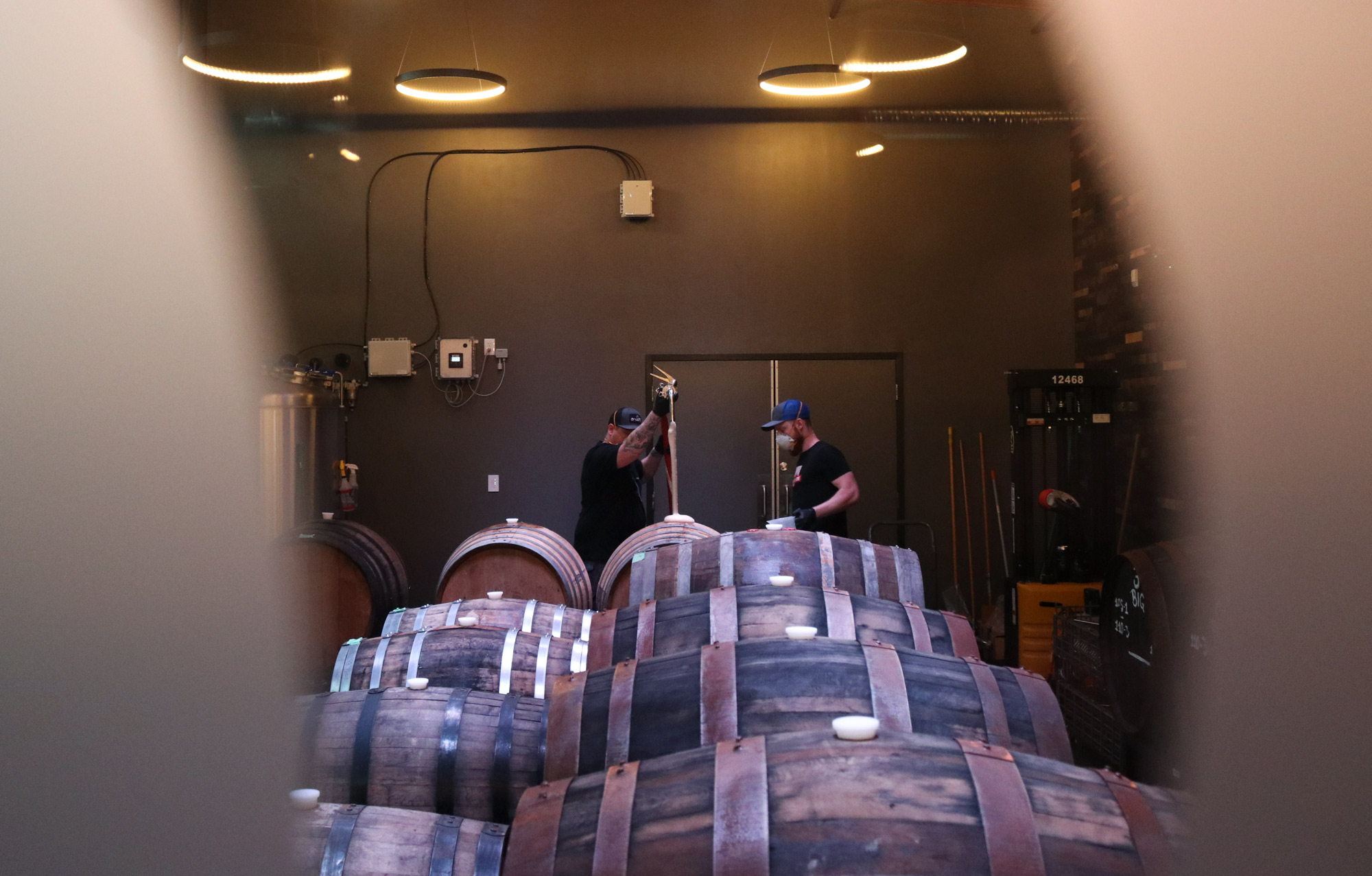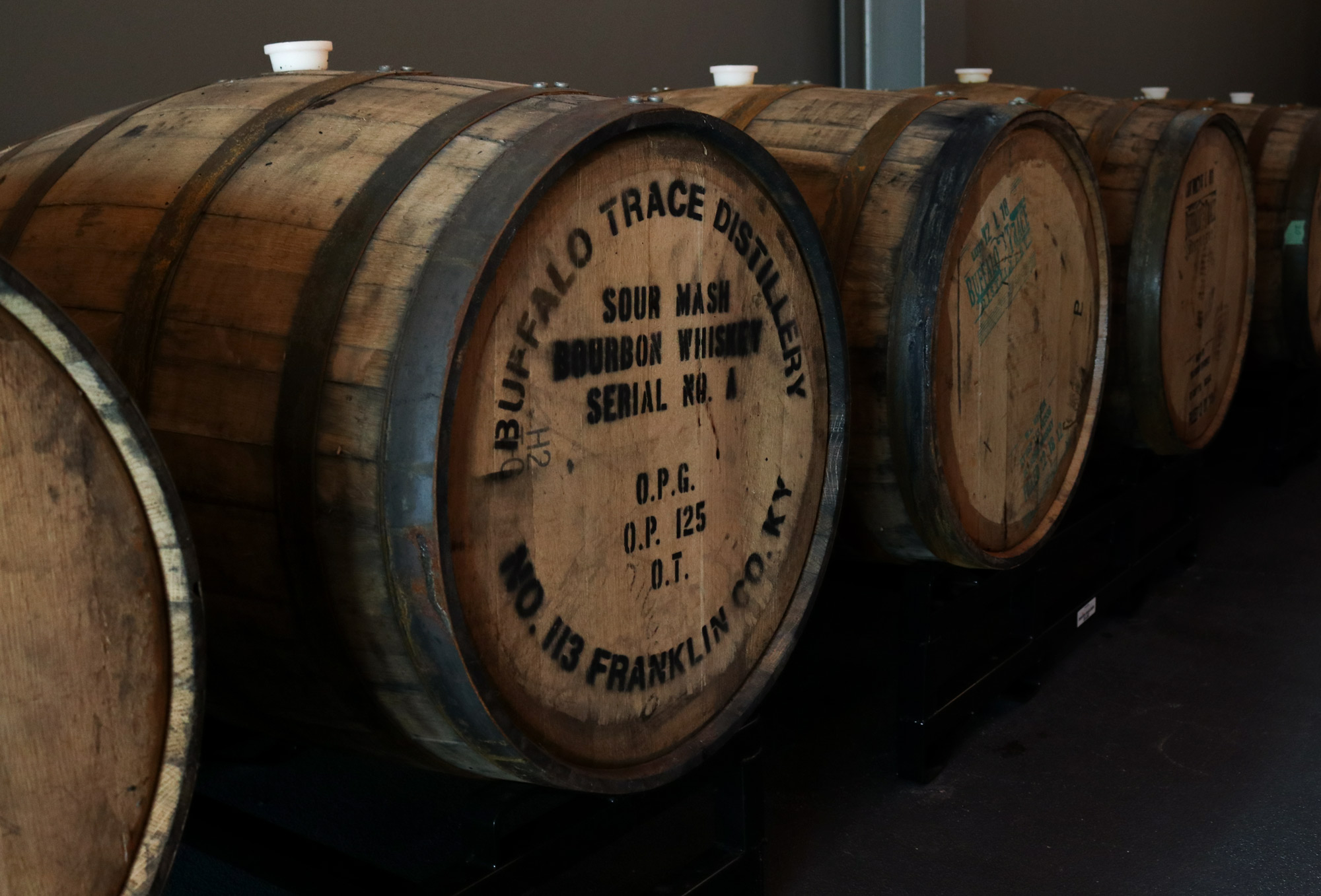
As we approach the first release of a barrel-aged beer from our Market brewery, we thought it would be worthwhile to talk about some of the steps that go into making those special beers. We’ve already discussed the difference between barrel-aged beers and barrel-fermented beers so keep that in mind as we reveal how we select the barrels we use for aging beer. We’re carefully designing these beers and trying to leave as few items as possible to chance. We aim for a flavour target and try and hit it with the beer we create.
We’re carefully designing these beers and trying to leave as few items as possible to chance. We aim for a flavour target and try and hit it with the beer we create.
Putting finished beer in a barrel is the deciding step in the creation of a barrel-aged beer. Any fresh barrel (one that was recently emptied of its initial contents) will have a huge flavour and character impact on the beer. We think it’s best to decide on the type of base beer we want to use in tandem with the barrel choice, meaning that we usually brew a special beer for the barrel rather than using an existing beer that wasn’t designed for barrel use. What’s different about the base beers for our barrels? We’ll typically do a higher alcohol beer and accentuate characteristics we want to see in the finished beer. We also avoid some flavour combinations we don’t like. For example, we don’t combine strong roasted notes with fruit character as this can lead to a harsh astringency. Base beer makes a big difference, so we’re as thoughtful about that as we are about the barrels we use.

There are a number of sources of barrels available to breweries, and we use as many of them as possible. We often source barrels from brokers that purchase used barrels from wineries and distilleries. Using brokers gives us a big geographic reach for the barrels we can use, and they’re often able to get more esoteric barrels than we would be able to find ourselves. We just got some lovely Cognac and Armanac barrels from France that we’d never be able to find ourselves. The other main way we get barrels is by going directly to wineries and distilleries. We’ve just started doing this and have had some pretty good initial luck as we build relationships with some of our favourite producers.
Finally, it’s not just where a barrel is from that makes it special, but it’s also what was previously inside it. At the Market we tend to do smaller batches of beer, so we often only need a handful of barrels which allows us to find some really interesting fresh barrels for our beer. For example we’ve been using Port, Rum, Tequila (which were formerly Bourbon), fresh Bourbon barrels, and even barrels of a relatively rare French aperitif called Pineau Des Charantes. Each of these types of barrels has different characteristics that we consider when we make the base beer. Bourbon-barrel beers will typically be big and dark in order to stand up to the rich sweetness of the Bourbon. Tequila can be boozy (lots of alcohol notes), but also fruity, so you can make a beer that benefits from some alcohol fortification and fruity enhancement. Rum is really nice with a rich, caramel base beer. We also strive to often avoid the usual expected pairing when designing these beers. We also consider further additions of ingredients in the barrel or after blending to further enhance the beer. However, that sounds like a topic for another day.

So that’s the quick summary of how we design our barrel-aged beers from our Market brewery. The process is more controlled than barrel-fermentation as we’re working with a finished beer, but there are lots of interesting variables that we get to play with in order to surprise and delight beer drinkers. Watch for an update on our upcoming first barrel-aged release so you can taste our handiwork personally!

